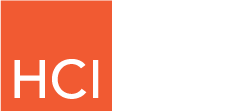RESOURCE HUB ARTICLE
Are Employee Benefits Keeping Up With Employee Expectations?
Lin Grensing-Pophal, Contributing Editor at HR Daily Advisor
Apr. 9, 2025 | Employee Wellness
The gap between what employees want from their benefits and what employers offer continues to grow. While traditional offerings like health insurance and retirement plans are still valued, they’re no longer enough to differentiate employers in a competitive talent market. Expectations have evolved—and fast.
The Basics Are Now Just the Starting Point
Health coverage, PTO, and retirement plans remain essential. But in many workplaces, they’ve become baseline expectations rather than compelling perks. Workers—particularly Millennials and Gen Z—are asking for more. They want benefits that reflect modern life: mental health support, scheduling flexibility, financial wellness tools, and inclusive policies that support different family structures and life stages.
Flexibility Is More Than a Trend
The shift toward remote and hybrid work changed how people think about flexibility. But flexibility today goes beyond where employees work. It includes when they work, how much time they can take for caregiving, and whether they feel trusted to manage their time their way. Many employers now offer flexible arrangements, but inconsistent implementation or unclear policies can cause frustration and erode trust.
Mental and Financial Health Are Priorities
Interest in mental health support has grown steadily, and employees expect access to meaningful resources—not just check-the-box EAPs. Similarly, financial wellness has moved up the priority list, with more workers seeking guidance on student debt, emergency savings, and long-term financial planning.
One-Size-Fits-All Doesn’t Work Anymore
Employee populations are increasingly diverse—in age, lifestyle, income level, and family structure. What feels essential to one employee might feel irrelevant to another. That’s why employers are exploring more flexible and customizable benefits: think lifestyle spending accounts, tiered offerings, or platforms that let employees choose what matters most to them.
How Employers Can Respond
Listening is the first step. Regular feedback loops, engagement surveys, and utilization data can help employers understand what’s working and where gaps exist. From there, companies can focus on delivering benefits that reflect their workforce’s real needs—not just what’s traditional or easy to administer.
To compete for talent today, benefits must do more than tick boxes—benefits must be human, flexible, and relevant.
Continue Your Employee Wellness Learning
Beyond Employee
Engagement Workshop
Make your employee experience a competitive advantage in this half-day virtual HR workshop.
Coaching for Engagement &
Performance Certification
Unlock the power of coaching to transform your workplace culture and drive success
Resources
Get In Touch

Contact 1-866-538-1909



